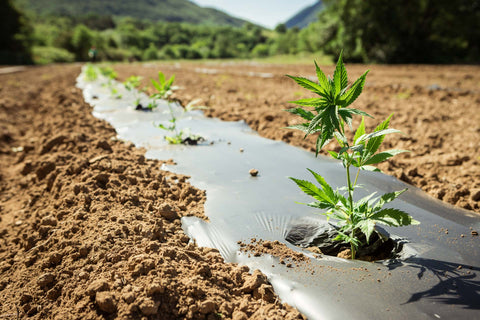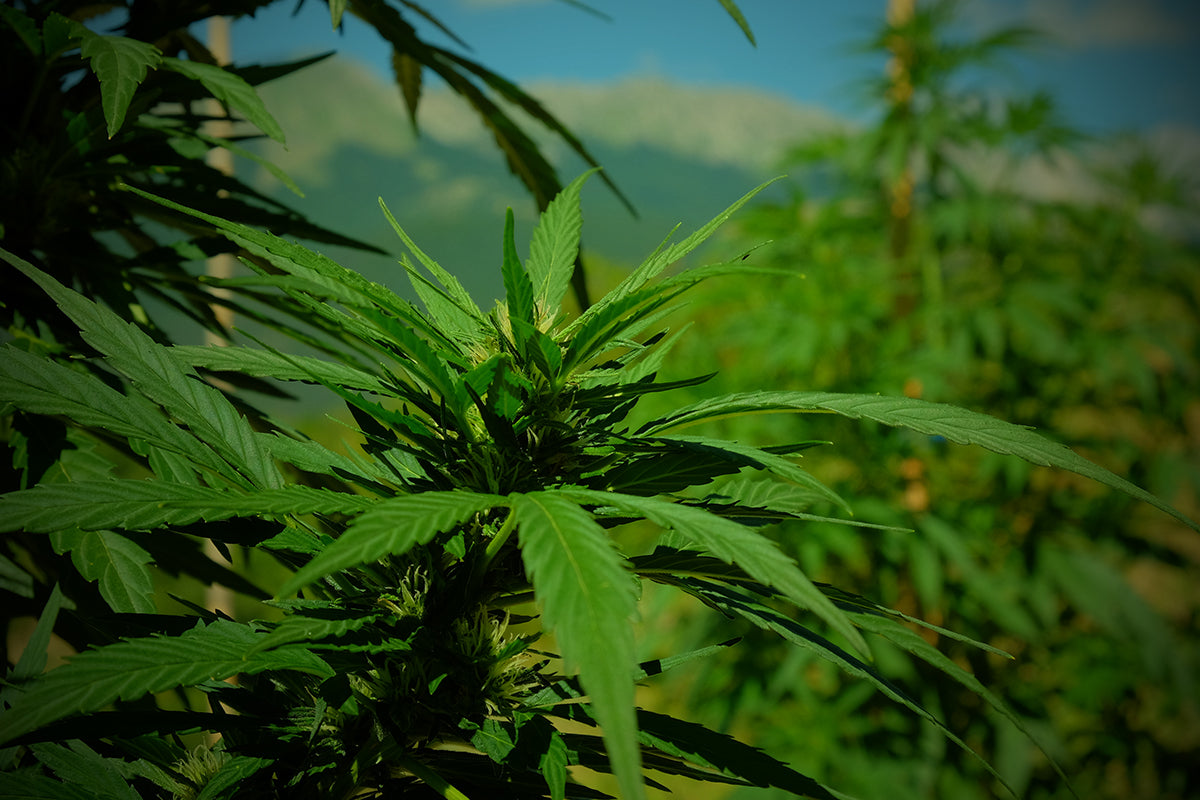According to data from Coldiretti , in the last five years the land exploited for the cultivation of hemp in Italy has increased tenfold. We went from 400 hectares in 2013 to around 4,000 in 2018 . Given the large increase, it is time to look at this phenomenon in more depth. To understand how to move and what is best to know before taking the big step.
Summary:
- Growing Italian cannabis?
- What possible uses?
- If it is possible, under those conditions?
- Is outdoor or indoor better?
- Take to the field
- Yet, we had already done it
Growing Italian cannabis?
First of all: is it legal? It is, but under certain conditions. Thanks to law 242/2016 which regulated the cultivation and agro-industrial supply chain of light marijuana in our country.
Currently, no authorization is required. But only for the sowing of certified hemp varieties with a THC level which may not exceed 0.2% . Furthermore, an oscillation in the THC value up to the limit of 0.6% is tolerated.
Within which the farmer does not incur any sanctions. While the obligation to conserve the labels of the seeds (registered in the official catalogue) used for at least 12 months remains.
Currently, the crops allowed are for industrial use (biomass). For production for ornamental and food purposes through the processing of seeds free of psychotropic principles.
What possible uses?
There is a large quantity of foods obtained from the processing of light hemp seeds, including flours, biscuits and bread. Substances rich in essential amino acids, highly digestible. The virtues of hemp oil are recognized by the Ministry of Health and the WHO.
From hemp we obtain products used for cosmetics, natural fabrics particularly appreciated for clothing, extremely resistant fibers and resins for furnishings.
Hemp is also present in green building by virtue of its insulating capabilities, as well as being distributed in the form of ecological pellets. (A separate discussion concerns the cultivation of cannabis for therapeutic use, the so-called "state cannabis".
Produced exclusively in the military chemical-pharmaceutical plant in Florence).
The production of industrial hemp is added to this long list. Cultivation that exploits the inflorescences belonging to the hemp varieties permitted for industrial uses already present in the official list of cultivable seeds.
The flowers used for distribution are to be considered surpluses attributable to production intended for other purposes.
Although Cannabis inflorescence is not classified as a medicinal, combustion or food product, it has finally been possible to see its production and trade regulated.
The Ministry of Agricultural Policies has confirmed the legitimacy of the cultivation of Cannabis Sativa in Italy. Growing light cannabis is legal, as long as some rules are observed.
 If it is possible, under what conditions?
If it is possible, under what conditions?
A circular from the Ministry of Agricultural Policies clarified the conditions that make the cultivation of light cannabis possible:
-
it must be produced from certified seed;
-
Agamic reproduction (i.e. through the formation of new organisms starting from a single organism) is not permitted;
-
it is mandatory to keep the certified seed label and the related purchase certification for a period of at least 12 months.
-
the sale of hemp plants for ornamental purposes is permitted without authorization, provided that the established THC limits are respected.
-
plants imported for commercial purposes from other countries refer to European Union regulations.
Is outdoor or indoor better?
At this point it is appropriate to ask ourselves which cultivation model guarantees a better yield while preserving the health of the plants. There are specific characteristics attributable to two options:
- Outdoor cultivation is in an open field. It requires soil with the right characteristics and large spaces to guarantee the plant natural growth.
Although outdoor cultivation is simpler and cheaper, it is less profitable and more risky.
- Indoor cultivation is more varied, designed to obtain high quality products.But if on the one hand it offers the certainty of the harvest, a cyclical harvest and rapid growth taking advantage of limited spaces, it is also true that this involves an exponential increase in expenses and certainly a greater commitment.
 Take to the field
Take to the field
Can we improvise as farmers? Let's take a small example: let's say you have a cultivable hectare available.
Obviously, after having carried out good ploughing, milling and created an irrigation system you will have to think about using a closed area for drying .
The selection and elimination of impurities in the harvested product are fundamental. It is good to know the level of nutrition offered by the soil and the climatic conditions of the geographical area.
Finally, establish a correct irrigation plan and possible revitalization of the humus present in the soil. What could be the result?
Let's move on to the harvest. In the case of inflorescences, the harvesting time is determined by two factors. The peak of flower maturation and the climatic conditions favorable to carry out the operation.
When all is said and done, you may have obtained 500 to 1000 kg of marketable product from your hypothetical hectare.
Yet, we had already done it
In Italy, hemp production is not exactly new.
I n the 1940s, with almost 100 thousand hectares cultivated, our country was the second largest producer of hemp in the world (after the Soviet Union).
During the years of the embargo, even the fascist dictatorship had attempted to comply with the limited availability of some common materials. Above all by resorting to the virtues of hemp for the most varied uses (first of all, clothing).
In fact, hemp grew luxuriantly and with great ease in regions such as Emilia-Romagna. The decline would come with industrialization, the growth of petrochemical derivatives and the arrival of synthetic fibers on the market.
Added to this was the international campaign against narcotics. Which sanctioned its sudden elimination, aimed at the definitive ban, for a plant deemed "highly dangerous".
The signing of the “ Single Convention on Narcotic Substances ” by Italy in 1961 . And above all the " Cossiga law " against narcotics of 1975 decreed the disappearance of hemp from Italian landscapes.
But today is another story.
If the article was of interest to you, share it on social media with the rest of the Community, every single share helps us support our Blog and keep you 360° informed about the world of Cannabis.
You might also be interested in:








